Exploring Vocational Education: Insights from Key Studies delves into the evolving landscape of vocational education, defined by the 1990 Perkins Act as programs designed to prepare individuals for employment in various occupations. This exploration highlights the distinctions between secondary and postsecondary vocational education, examining their objectives, course types, and the integration of academic and vocational training to enhance career advancement opportunities.
1. Overview of Vocational Education
Vocational education, as defined by the 1990 Perkins Act, encompasses organized programs that prepare individuals for employment in occupations requiring less than a baccalaureate degree. This education is available at both secondary and postsecondary levels, with secondary programs focusing on a broader range of skills, including consumer education and general labor market preparation, while postsecondary programs emphasize specific occupational training.
At the secondary level, vocational education is primarily delivered through comprehensive high schools and area vocational schools, with a significant number of students participating in various courses. In 1992, 97% of public high school graduates completed at least one vocational course, highlighting its importance. Meanwhile, postsecondary vocational education, which accounted for 35% of undergraduate enrollments in 1990, primarily targets occupationally specific skills, with business programs being the most popular among students.
2. Secondary Vocational Education Trends
Secondary vocational education has evolved significantly since the 1990 Perkins Act, which established a framework for organized programs aimed at preparing students for employment in various occupations. Unlike postsecondary education, secondary vocational education emphasizes general employability skills, catering to both paid and unpaid job opportunities. This focus helps students transition smoothly into the workforce.
Courses in secondary vocational education are categorized into three main types: consumer and homemaking education, general labor market preparation, and specific labor market preparation. The latter is particularly important as it equips students with the skills necessary for targeted occupational fields, ensuring they are job-ready upon graduation. This structured approach allows students to explore various career paths while gaining practical skills.
Most secondary vocational education is delivered through comprehensive high schools, which serve the majority of students. While area vocational schools and full-time vocational high schools exist, they only enroll about 10% of secondary students. Many high school students engage in vocational courses without formally enrolling in an occupational program, leading to a diverse educational experience that may not always culminate in a coherent sequence of courses.
Despite a decline in vocational credits earned by high school graduates between 1982 and 1992, participation in vocational education remains high. In 1992, 97% of public high school graduates completed at least one vocational course, with business being the most popular area of study. Interestingly, while males tended to earn more occupationally specific credits, females excelled in consumer and homemaking education, highlighting the diverse interests and career aspirations among students.
3. Postsecondary Vocational Education Insights
Postsecondary vocational education, as defined by the 1990 Perkins Act, encompasses organized programs that prepare students for employment in occupations requiring less than a baccalaureate degree. This education is crucial for equipping individuals with the specific skills needed in various industries. With a focus on practical training, these programs cater to the demands of the job market, ensuring graduates are workforce-ready.
In 1990, approximately 5.8 million students were enrolled in postsecondary vocational education, representing about 35% of all undergraduate enrollments. The popularity of vocational programs is evident, with business, health, and trade and industry being the most sought-after fields. Public vocational-technical institutes play a significant role, housing 90% of nonbaccalaureate students in vocational curricula, highlighting the importance of these institutions in vocational training.
Research indicates that students who concentrate on vocational courses tend to experience higher earnings, particularly when entering training-related jobs. In 1992, a notable percentage of high school graduates were identified as vocational concentrators or specialists, demonstrating a commitment to skill development. Furthermore, employed vocational completers aged 18-34 often found work in fields related to their training, reinforcing the link between vocational education and career success.
4. Participation Rates in Vocational Programs
In 1992, a significant 97% of public high school graduates engaged in vocational education, with 87% completing at least one occupationally specific course. However, despite the high participation rates, there was a notable decline in vocational credits earned, dropping from 21% of total coursework in 1982 to 16% by 1992. This trend highlights a shift in educational focus, even as comprehensive high schools remained the primary providers of vocational training.
At the postsecondary level, vocational education maintained a strong presence, with 5.8 million students enrolled in 1990, accounting for 35% of all undergraduate enrollments. Notably, 90% of nonbaccalaureate students at public vocational-technical institutes were pursuing vocational curricula. This indicates a robust interest in specialized training, particularly among demographic groups such as Black nonbaccalaureate students, who reported higher rates of enrollment in vocational programs.
5. Impact of Vocational Education on Earnings
Vocational education significantly impacts earnings, as evidenced by the National Assessment of Vocational Education (NAVE). Graduates who concentrated their studies in specific occupational programs often earned higher wages, with 39% of those employed in related fields making over $2,000 monthly, compared to 30% in unrelated jobs.
6. Demographics of Vocational Education Students
In the realm of vocational education, demographic trends reveal significant insights into student participation. In 1992, nearly all public high school graduates engaged in vocational courses, with a notable decline in vocational credits over the decade. Business programs emerged as the most popular, attracting over half of graduates, while a smaller percentage concentrated in specialized vocational tracks.
At the postsecondary level, vocational education attracted a diverse student body, with 5.8 million enrollments in 1990. Female students comprised the majority, particularly in nonbaccalaureate programs, while racial-ethnic diversity varied across institutions. Special populations, including economically disadvantaged students, showed higher participation rates, emphasizing the role of vocational education in providing opportunities for underrepresented groups.
- In 1992, 97% of high school graduates completed at least one vocational course.
- Business was the leading occupational program, with over 50% of graduates enrolled.
- In 1990, 57% of nonbaccalaureate postsecondary students were female.
- Black nonbaccalaureate students had higher rates of majoring in vocational programs.
- Economically disadvantaged students were more likely to pursue vocational majors.
7. Integration of Academic and Vocational Education
The integration of academic and vocational education has gained momentum since the 1990 Perkins Act, which emphasizes the importance of coherent sequences of vocational courses. Secondary vocational education aims to equip students with general employability skills while preparing them for specific occupations. This approach is implemented through comprehensive high schools and vocational institutions, ensuring that students gain both practical and theoretical knowledge.
At the postsecondary level, vocational education focuses on advanced occupational preparation, with a significant enrollment of students. By 1992, over 80% of public high schools reported integrating academic and vocational education, primarily by incorporating employability skills into vocational courses. This integration has shown positive outcomes, as vocational completers tend to have higher employment rates, particularly in fields related to their training, highlighting the effectiveness of this educational approach.
8. Challenges in Vocational Education Systems
Vocational education systems face several challenges, including declining enrollment and a lack of focused coursetaking among high school students. While the 1990 Perkins Act aimed to integrate academic and vocational training, many students do not complete coherent sequences in specific occupational fields. Additionally, disparities in participation rates based on gender and socioeconomic status further complicate the effectiveness of these programs.
In conclusion, vocational education in the United States has undergone significant changes since the early 1990s, focusing on equipping students for both immediate employment and long-term career growth. Despite high participation rates, challenges persist, such as declining vocational credits and incomplete course sequences, which hinder effective preparation for the labor market. Addressing these issues is essential for enhancing vocational training outcomes.



